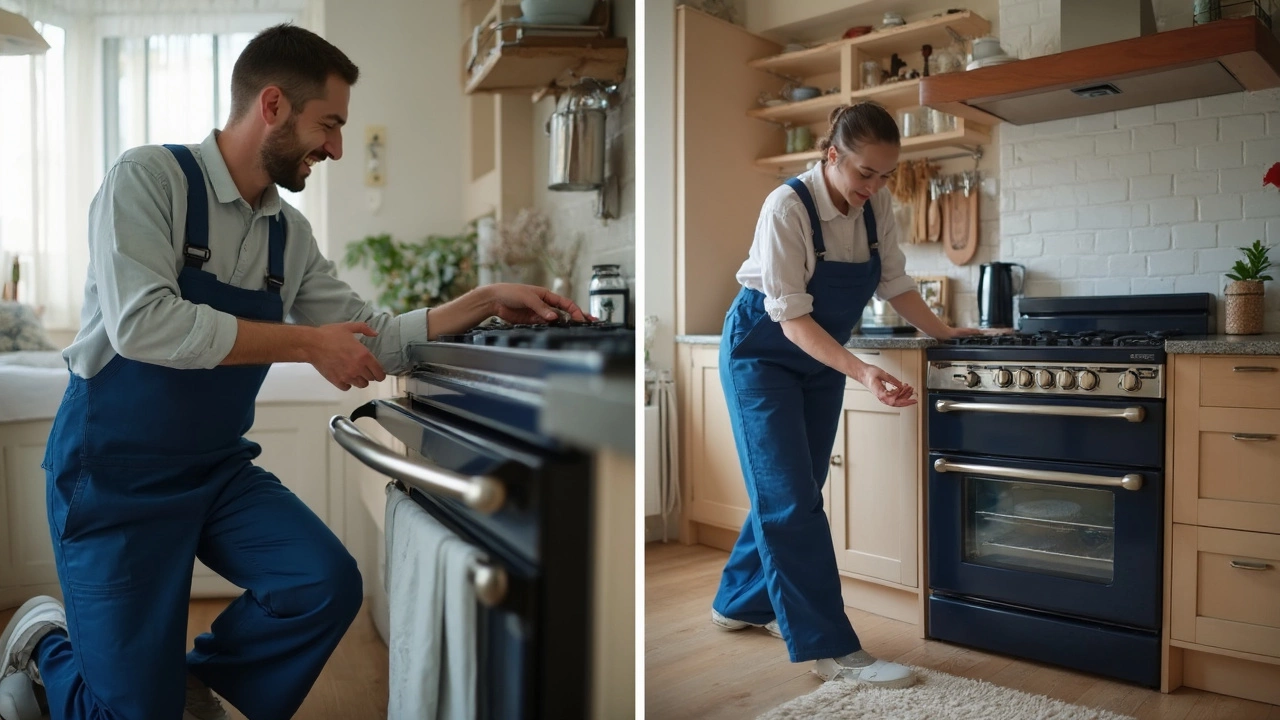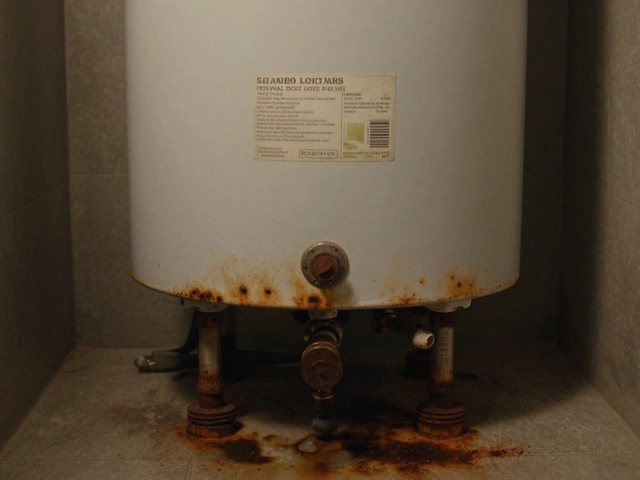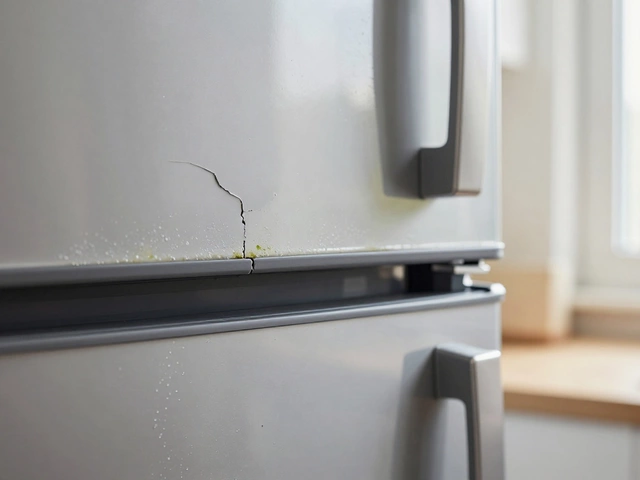Electric stove acting up? Before you grab your wallet or start clicking through online ads for shiny new ovens, it’s worth figuring out what’s really wrong. Not every little glitch means trashing your stove or paying for a whole new appliance. Some problems are as simple as a blown fuse or a loose burner connection—stuff you can actually check in five minutes.
If your stove won’t heat up, or some burners work and others don’t, don’t panic. Start by unplugging it (safety first) and looking for obvious signs like food spills blocking contacts, or a breaker that’s flipped in your electrical panel. Believe it or not, about a third of repair calls are for things owners could have fixed themselves with a screwdriver and some common sense.
Knowing when to roll up your sleeves and when to call a repair pro can save you a ton of money. On the flip side, dumping cash into endless fixes isn’t smart either—especially if your stove’s getting old or replacement parts are hard to find. So how do you know what’s worth it? That’s what we’re about to break down, without wasting your time or money.
- Common Problems With Electric Stoves
- Can You Fix It Yourself?
- What Repairs Actually Cost
- When Replacement Makes More Sense
- Longevity: How Long Should a Stove Last?
- Tips to Avoid Costly Repairs
Common Problems With Electric Stoves
If your electric stove is misbehaving, you’re definitely not alone. There are a handful of problems that almost every stove owner runs into at some point. Recognizing these issues can help you get cooking again faster—and avoid overpaying for a quick fix.
Here are the mishaps that show up the most with electric stoves:
- Burner won’t heat up: Most of the time, a broken surface element, a bad socket, or a busted switch messes things up. Plug-in style burners get loose or corroded, especially if you move them to clean under there.
- Burner too hot or too cold: If one burner is going full blast no matter what, the switch behind the dial is probably fried. This isn’t just annoying—it can actually burn your food or even start a fire if you leave it unattended.
- Indicator light stays on: The little light that tells you the stove is still hot sometimes gets stuck. Usually, the culprit is a faulty switch not telling the light to turn off.
- Oven not heating: You set the temp, but it’s still cold inside. This often means a bad bake or broil element. It could also be a failed temperature sensor or the control board acting up.
- Weird smells or strange noises: Sudden odd smells might just be old food burning off, but if it smells like melting plastic or you hear buzzing, cut the power and check for electrical issues. This could mean trouble with wiring or connectors, which is worth fixing ASAP to avoid a bigger problem.
A surprising stat: According to a study published last year, about 70% of electric stove repair calls are for those busted burners and oven elements. So, if your stove acts up, chances are it’s not some mystery that needs an expensive fix—it’s probably something a technician sees every week.
Spotting the pattern early makes things cheaper and less stressful. Don’t ignore the signs; catching them early can keep a small issue from turning into a big headache.
Can You Fix It Yourself?
Most electric stove problems aren’t rocket science. Before reaching for your phone to call an appliance repair pro, it’s smart to see what you can do yourself. For some issues, you only need a screwdriver and a little patience.
Here’s a quick reality check—if your stove isn’t heating or a burner won’t turn on, it doesn’t always mean an expensive fix. Sometimes it’s something as basic as a loose coil, a dirty contact, or a tripped circuit breaker. You don’t need special training to check those, just some common sense and basic safety habits (unplug it before poking around!)
- Electric stove repair for a dead burner: Swap the non-working coil with one that works. If it comes to life, you know it’s the coil, not the socket or control knob.
- For ovens that won’t heat up, check the bake or broil element for visible breaks or burns. Replacing an element is usually a plug-and-play job you can handle with a few screws.
- If the whole stove doesn’t work, look at your breaker panel. About one in five reported issues are just tripped breakers. Flip it back and see if everything lights up.
- Digital displays acting weird? Sometimes unplugging the stove for five minutes can reset the electronics.
Of course, if you smell burning, see sparks, or notice melted wires, don’t mess around—call an expert. And if your appliance is still under warranty, don’t open it up. DIY fixes can void coverage.
Here’s a quick look at common repairs and how tough they really are:
| Issue | DIY Friendly? | Average Time |
|---|---|---|
| Burner not heating | Yes | 10 minutes |
| Control knob broken | Yes | 5 minutes |
| Oven not heating | Sometimes | 20-30 minutes |
| Digital display issue | Maybe | Varies |
| Weird smells/sparks | No | Call a pro |
If you’re even a little handy, tackling the basic stuff saves money and gets your stove running sooner. If not, knowing what’s realistically fixable helps you talk to a pro without getting upsold on repairs you don’t actually need.
What Repairs Actually Cost
So, how much does electric stove repair usually set you back? It totally depends on what’s wrong, but let’s get specific. Small stuff like replacing a burner coil or fixing a broken knob usually runs $20–$60 if you handle it yourself. Handy with a screwdriver and you just saved yourself from an expensive service call.
But if your stove’s issue is more serious—say, a busted control board or a fried wiring harness—that’s where things start adding up. You’re looking at $150–$400, depending on the brand and the part. And if you call in a pro? Expect to add about $75–$150 just for the visit, plus parts and labor.
Here’s a quick look at what some common fixes typically cost in the U.S. as of this year:
| Repair Type | DIY Parts Cost | Pro Service Cost |
|---|---|---|
| Burner replacement | $20–$60 | $120–$220 |
| Oven element | $25–$75 | $110–$250 |
| Broken knob | $10–$30 | $70–$120 |
| Electronic control board | $90–$250 | $200–$400 |
According to HomeAdvisor, the average cost for an electric stove repair in 2024 was around $180—but you might pay as little as $75 or as much as $400, depending on what’s broken. One appliance repair tech told me:
"Most repairs are way cheaper than a new stove—unless you’re dealing with a dead control board or a major wiring issue. That’s often when people decide it’s not worth sinking more cash."
Important tip: If your repair is creeping past half the cost of a new stove (usually $600–$1,000 for a mid-range model), think hard about whether it makes sense to keep fixing it. None of us want to pay for the same fix twice.

When Replacement Makes More Sense
It’s not always smart to keep sinking money into an old electric stove when replacing it might actually save you stress and cash. So, when does it make more sense to say goodbye for good?
- Repair costs come close to the price of a new stove. If fixing that burnt-out control panel or a cracked glass top will run you $300 or more, you may as well check out a new model. According to appliance repair shops in 2024, an average new mid-range stove sells for about $600-$800, while major repairs can easily add up fast.
- Replacement parts are getting tough to find. Once your stove is past 10 years old, tracked-down circuit boards or elements sometimes get discontinued. If parts are backordered or cost a fortune, replacement wins.
- Your stove keeps breaking down. If you’ve already had to fix it two or three times in the last year, that’s a huge red flag. A repeated pattern means the whole unit is wearing out.
- Performance is dropping. Are the burners now taking forever to heat, or is your oven baking unevenly? Modern stoves are way more efficient, and some offer features like easier cleaning and better temperature control.
- Your energy bills are creeping up. Old stoves can sometimes pull more amps than they should—you'll notice a spike on your electric bill. Newer stoves are built for energy-saving, with better insulation and automatic shutoffs.
Still not sure? Here’s a side-by-side comparison for a quick gut check:
| Situation | Repair | Replace |
|---|---|---|
| Heating element out, easy to swap | ✔️ | |
| Control board fried, 12-year-old stove | ✔️ | |
| Cracked glass cooktop, expensive part | ✔️ | |
| Minor wiring issue, under 5 years old | ✔️ | |
| Frequent breakdowns, rising bills | ✔️ |
Bottom line: Don’t be sentimental about your stove. Run the numbers honestly before spending money on big repairs, especially if your unit is old and inefficient. Sometimes upgrading is just plain smarter, both for your wallet and your peace of mind.
Longevity: How Long Should a Stove Last?
You’re probably wondering if your old electric stove still has some years left, or if it’s just sucking up electricity and begging for retirement. Most folks don’t realize that the average electric stove is built to last. If you treat it right, you can usually expect about 13 to 15 years of solid use. Some people push it to 20, but by then it’s usually missing knobs, has a couple lazy burners, and you’ve probably cursed at it more than once.
Why do some stoves outlast others? Usage matters. If you're baking pizzas every other day or frying up daily breakfasts, your appliance will wear out quicker than if it only gets used on special occasions. Also, regular repairs and a little bit of cleaning once in a while seriously stretch the life of your stove.
Here’s a quick breakdown of what affects electric stove lifespan:
- How often you use it (seriously heavy use = faster wear)
- If it gets the proper cleaning (gunk buildup can fry wires and ruin burners)
- The quality of the brand (some cheaper models just aren’t built for the long haul)
- Whether you handle repairs quickly (letting problems fester makes everything worse)
For a quick visual, here’s how long you might expect to get out of different kitchen appliances:
| Appliance | Average Lifespan (Years) |
|---|---|
| Electric stove | 13-15 |
| Microwave | 8-10 |
| Dishwasher | 9-12 |
| Refrigerator | 10-17 |
The key takeaway? If your electric stove repair bill is getting close to half what a new one costs, and it’s already a decade old or more, it’s smarter to start looking for a replacement. But if it’s under ten years and hasn’t needed much fixing, a quick repair will usually buy you several more years of pancakes and casseroles with no drama.
Tips to Avoid Costly Repairs
Want to sidestep pricey fixes? Most electric stove breakdowns trace back to things you can actually control. Taking a few simple steps can keep your kitchen running smooth and your appliance repair bills in check.
- Electric stove repair pros always say: keep your burners clean. Spilled food easily burns onto coils or glass tops, and leftover gunk can cause uneven heating or even damage wires. Wipe up spills as soon as the stove cools, and give burners a regular gentle scrub with a non-abrasive pad.
- Don’t yank on your stove’s knobs. It sounds basic, but rough handling is behind a surprising number of broken controls. Always turn knobs carefully to avoid splitting the inside plastic mounts.
- Keep an eye on your stove’s power cord and wall outlet. If you spot any signs of wear—like fraying or scorching—turn off the power and get it checked. Damaged wiring is one of the top causes of both breakdowns and house fires.
- Don’t overload the cooktop. Heavy pots can crack glass surfaces or bend metal coils, which can result in a way bigger repair bill than you’d think. If you’re canning or cooking with big pots, use the biggest burner, and avoid dragging cookware across the surface.
- Every few months, double-check all burners and elements are heating evenly. Uneven heat could mean loose connections, which tend to get worse with time.
Curious how proper care stacks up? Take a look at this:
| Action | Chance of Needing Repair (5 Years) |
|---|---|
| Regular Cleaning | 12% |
| Spotty or No Cleaning | 41% |
So, a little attention now seriously cuts down your odds of needing repairs. That means more money in your pocket—and fewer dinnertime disasters.




